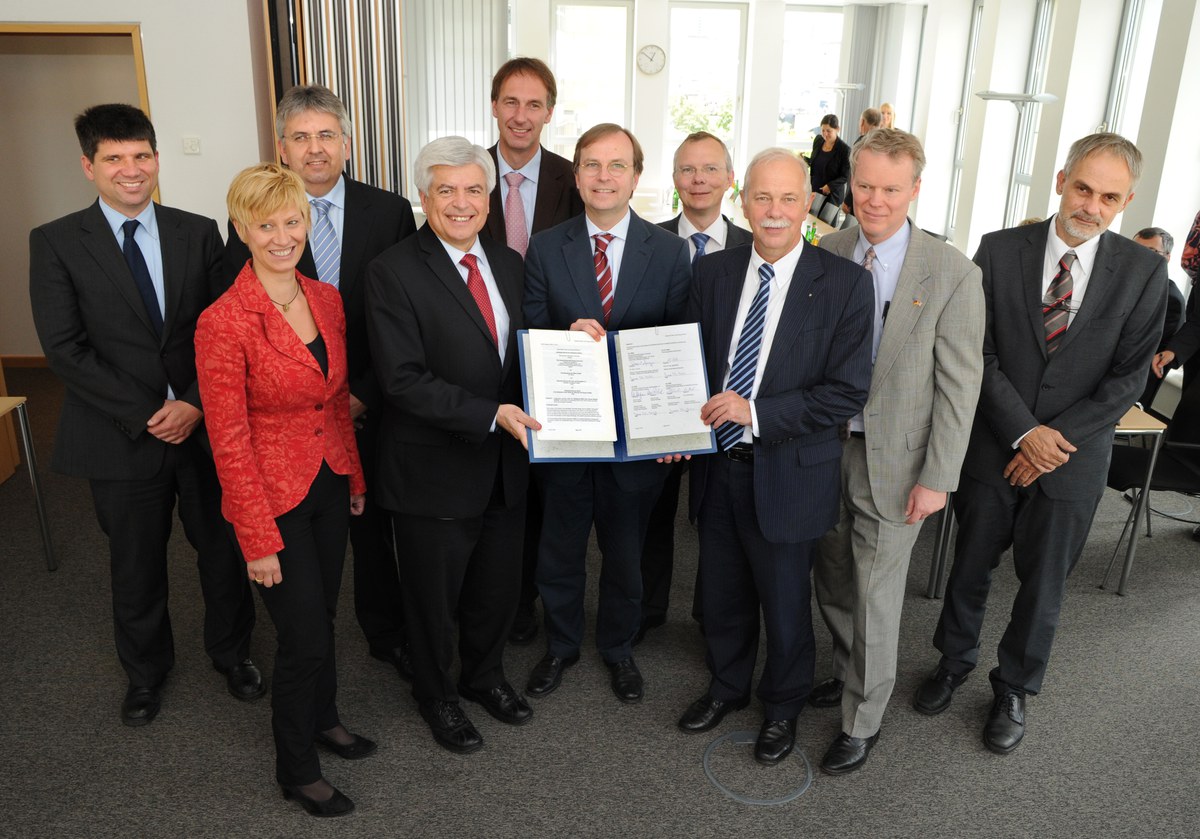Helmholtz and the NREL agree to collaborate on solar energy research
Berlin, 23 June 2011 – The Helmholtz Association and the US National Renewable Energy Laboratory signed an agreement today to work together more closely in order to close gaps in solar energy research and accelerate the development of new technologies. The agreement was signed in Berlin by representatives of both organisations. Greg Delawie, Deputy Chief of Mission, Embassy of the United States and Thomas Rachel, Parliamentary State Secretary of the Federal Ministry of Education and Research were also present for the signing.
"Today two outstanding organisations have agreed to join forces and drive progress in the fields of photovoltaic and solar thermal energy research," says Prof. Jürgen Mlynek, President of the Helmholtz Association. Solar energy is plentiful, but in order to convert it into electric power economically, photovoltaic cells and solar thermal energy modules need to become more efficient and cheaper to produce. In order to achieve this goal, researchers are pursuing new approaches with nanostructured materials and innovative module architecture.
The institutions within the Helmholtz Association that were involved in concluding the agreement are the German Aerospace Centre (DLR), Forschungszentrum Jülich and the Helmholtz-Zentrum Berlin für Material und Energie. Work at the HZB and Forschungszentrum Jülich focuses on new thin-layer materials for solar cells. Researchers at the DLR work on perfecting modules for the thermal utilisation of solar energy, which are already being applied commercially in large solar thermal power plants. Specialists at the DLR are also developing new kinds of thermal storage systems that can retain heat accumulated in the daytime for use at night, allowing electricity to be generated around the clock.
The MoU was signed by NREL Director Dan Arvizu, and leaders of three agencies within the German Helmholtz Association – the Research Center Julich (FZ Julich), the German Aerospace Center (DLR), and the Helmholtz Zentrum Berlin (HZB). "This agreement promises to advance the potential of the materials and technology that will form the basis of solar cells and solar fuels in the future," NREL Director Arvizu said.

The Helmholtz Association contributes to solving major challenges facing society, science and the economy with top scientific achievements in six research fields: Energy, Earth and Environment, Health, Key Technologies, Structure of Matter, Aeronautics, Space and Transport. With 31,000 employees in 17 research centres and an annual budget of approximately €3.3 billion, the Helmholtz Association is Germany’s largest scientific organisation. Its work follows in the tradition of the great natural scientist Hermann von Helmholtz (1821-1894).
